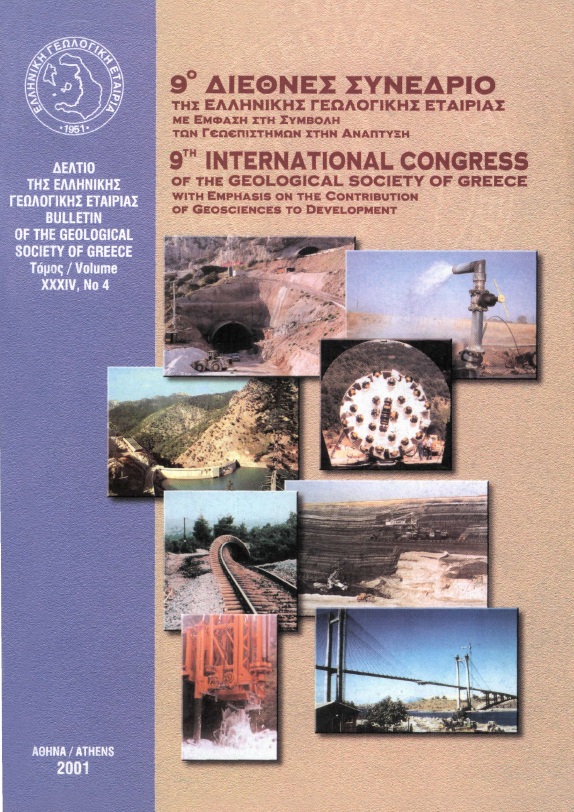GLOBAL RELATIONS BETWEEN SEISMIC FAULT PARAMETERS AND MOMENT MAGNITUDE OF EARTHQUAKES
Περίληψη
The most reliable of the globally available relative data have been used to derive empirical formulas which relate the subsurface fault length, L, the fault area, S, and fault width, w, with the moment magnitude, M. Separate such formulas have been derived for earthquakes generated by strike-slip faulting, by dip-slip faulting in continental regions and by dip-slip faulting in lithospheric subduction regions. The formula which relates the fault area with the magnitude is combined with the definition formulas of seismic moment and moment magnitude to derive also relations between the fault slip, u, and the moment magnitude for each of the three seismotectonic regimes. For a certain magnitude, the fault length is larger for strike-slip faults than for dip-slip faults, while the fault width is small for strike-slip faults, larger for dip-slip faults in continental regions and much larger for dip-slip faults in regions of lithospheric subduction. For a certain magnitude, fault slip is about the same for strike-slip faults and dip-slip faults in continental regions and smaller for dip-slip faults in regions of lithospheric subduction.
Λεπτομέρειες άρθρου
- Πώς να δημιουργήσετε Αναφορές
-
Papazachos, B. C., Scordilis, E. M., Panagiotopoulos, D. G., Papazachos, C. B., & Karakaisis, G. F. (2004). GLOBAL RELATIONS BETWEEN SEISMIC FAULT PARAMETERS AND MOMENT MAGNITUDE OF EARTHQUAKES. Δελτίο της Ελληνικής Γεωλογικής Εταιρείας, 36(3), 1482–1489. https://doi.org/10.12681/bgsg.16538
- Ενότητα
- Σεισμολογία

Αυτή η εργασία είναι αδειοδοτημένη υπό το CC Αναφορά Δημιουργού – Μη Εμπορική Χρήση 4.0.
Οι συγγραφείς θα πρέπει να είναι σύμφωνοι με τα παρακάτω: Οι συγγραφείς των άρθρων που δημοσιεύονται στο περιοδικό διατηρούν τα δικαιώματα πνευματικής ιδιοκτησίας επί των άρθρων τους, δίνοντας στο περιοδικό το δικαίωμα της πρώτης δημοσίευσης. Άρθρα που δημοσιεύονται στο περιοδικό διατίθενται με άδεια Creative Commons 4.0 Non Commercial και σύμφωνα με την οποία μπορούν να χρησιμοποιούνται ελεύθερα, με αναφορά στο/στη συγγραφέα και στην πρώτη δημοσίευση για μη κερδοσκοπικούς σκοπούς. Οι συγγραφείς μπορούν να: Μοιραστούν — αντιγράψουν και αναδιανέμουν το υλικό με κάθε μέσο και τρόπο, Προσαρμόσουν — αναμείξουν, τροποποιήσουν και δημιουργήσουν πάνω στο υλικό.







